Nokia: design history
Our portfolio contains more than a dozen unusual and interesting models in terms of design. We can say that it all started with the arrival of Frank Nuovo in the company in 1995. His track record includes studies at the Art Center College of Design in Pasadena and work at BMW Group DesignworksUSA, where he worked on dashboard design. It is no coincidence that his first project at Nokia was the design of a phone for a car.
It is thanks to Frank's fresh look that the approach to the development of mobile phones has changed: under his leadership, design and ergonomics have become paramount with functionality.
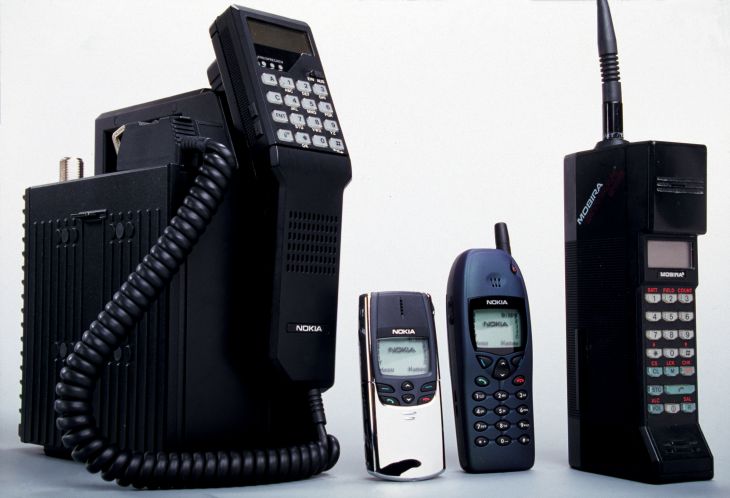
Under the cut, you are invited to tour the most interesting design models of Nokia.
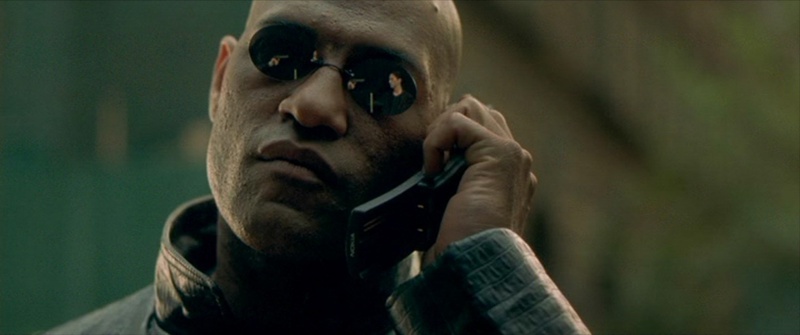
One of the first Nokia fashion phones to be recognized by the general public was the Nokia 8110. It was actively used by the characters of the film “The Matrix” by the Wachowski brothers. At the same time, the modification that appeared in the cult picture differed from the serial sample by the presence of a button for opening the flip, which was located on the rear panel.
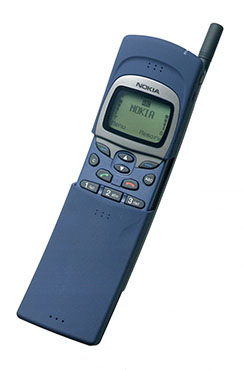
After the release of the film, a limited batch of phones in this modification was released. And the version in which the lid was manually moved came into mass sale. The phone is still popular among movie fans. Agree, this is very good for an apparatus created in 1997.
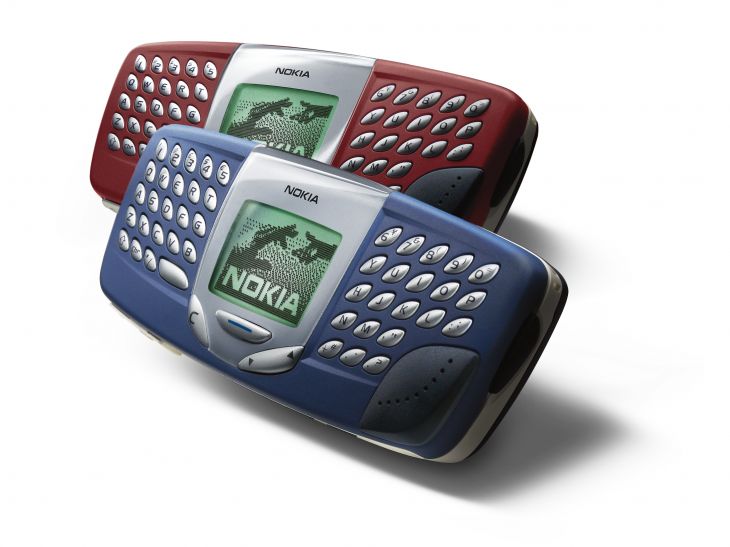
Nokia 5510, which appeared in 2001, became the first model with a full-size keyboard in the candy bar form factor in our portfolio. It resembled the legendary Nokia 3310 released a year earlier, but at the same time it had an expanded set of functions, a built-in mp3 player and FM radio. The blocks of keys located on the sides of the screen made the 5510 ideal for quick typing of short text messages, which were gaining in popularity at that moment. It was a one-of-a-kind model: more devices with this design were no longer produced. The closest in spirit to the 5510 model was the Nokia 6800, in which the keyboard was already folding.

Nokia 9000/9110 / 9210i / 9300/9500
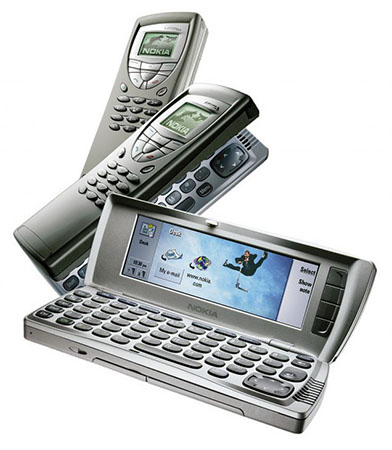
The whole line of business-class smartphones, which began with the Nokia 9000 in 1996, had a common family feature: when folded, the models looked like a regular phone with a standard keyboard and a small screen. And in open form, they were something like mini-laptops, with a large screen and a full keyboard. Only the first model, Nokia 9000, had an external antenna; subsequent models were already equipped with a built-in one.
Nokia 8810/8910 / 8910i
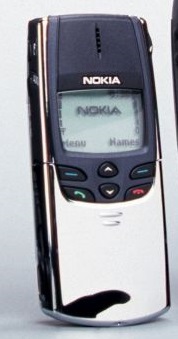
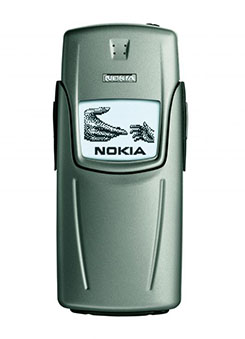
Under the leadership of Frank Nuovo, our designers staged a real revolution, proposing to use not only plastic, but also metal when creating phones. But in 1998, production lines did not yet have the ability to work with this material, so the Nokia 8810 received only a plastic flip coated with a metal. But Nokia 8910, released in 2002, was made of titanium.
In fact, the history of a separate line of premium models, which is characterized by the use of unusual and expensive materials - Vertu, began with these models.
Nokia 7650/3650/3660
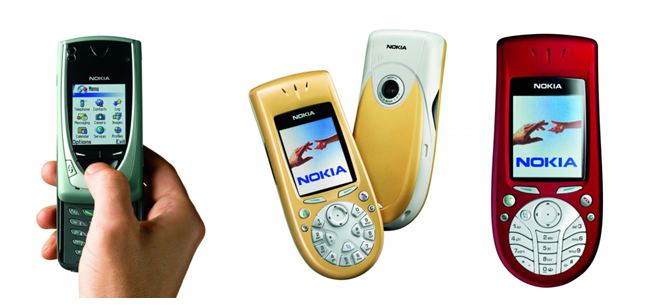
In 2002, the Nokia 7650 slider was a great success in the business environment, and in 2003 the Nokia 3650, which focused more on a youth audience, became its ideological follower. The keyboard, resembling a disk phone, caused an unusual, rounded down form of the case. From a design point of view, the next model, Nokia 3660, was distinguished by a more traditional layout of keys, however, it retained the drop-shaped case characteristic of its predecessor.
2003 was generally rich in phones and smartphones of an unusual shape. This is the Nokia 7600, aimed at a female audience, and smartphones for geeks - Nokia 7700 and Nokia N-Gage . The latter is worth telling in more detail.
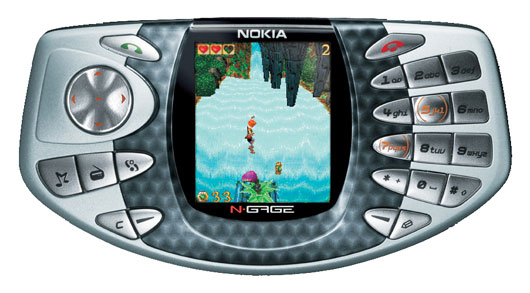
N-Gage was positioned not as a smartphone, but rather as a game console with the ability to make calls, send SMS and MMS. This is due to the unusual shape of its body: the keys are located on the sides of the bright color screen. Reminds Nokia 5510, which we talked about earlier, but in the N-Gage the alphanumeric keypad was located on the right, and on the left was placed a joystick and multimedia keys. An interesting solution was the location of the microphone and the speaker in the upper end of the smartphone, for this feature the people received the nickname Cheburashka. The QD model, which continued the N-Gage line, was a little smaller and had a standard speaker with a microphone, so that you could talk on it in a quite familiar way.

Around 2003-2004, a mobile phone ceased to be just a "workhorse", they began to treat it as a fashion accessory, which could not but affect the appearance of our models.
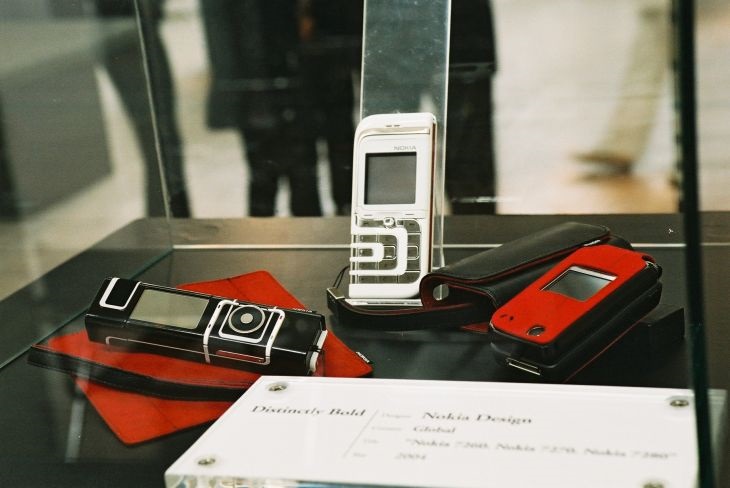
Especially for fashionists, in 2004 we released a series of fashion phones: Nokia 7260 - a candy bar, but with a designer keyboard, Nokia 7270 - a “clamshell” combining a plastic case with suede covers, and Nokia 7280. The latter, in fact, became an experimental model for women: in form, he looked more like a tube of lipstick than a telephone. Management was carried out using the touch wheel, and the screen in the off state could be used as a mirror.
In the future, the line of fashionable phones was continued. In 2006, the models Nokia 7360, 7370 and 7390 saw the light. The first phone was made in the form of a monoblock, the second - in an unusual case with a rotary opening mechanism, and the latter - the usual “clamshell”. The new line of designer phones received a less defiant coloring and standard control methods, although the principle of an unusual combination of materials remained the same: fabric and leather here were adjacent to plastic in pastel colors.

We have already mentioned several phones targeted at youth audiences. Let's recall other devices in this category.
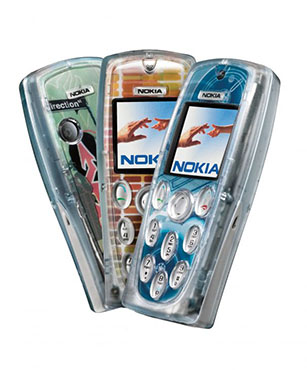
The Nokia 3200 , introduced in 2003, was available in a transparent case with unusual customization capabilities: it was proposed to cut the colored “earbuds” with a special device that came with the phone. At the same time, several ready-made liners were already included in the kit. Among other distinctive features, it is worth mentioning the double oval keys and their dynamic backlight: when they call, they blinked to the beat of the selected polyphonic melody.
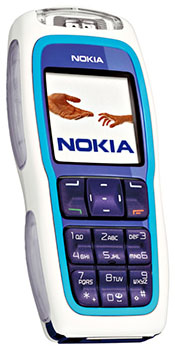
The continuation of this model in 2004 was the Nokia 3220. There was no longer such room for the design of the case, but dynamic backlighting was preserved when making a call, and the youthful and sporty character of the phone was expressed by rubber inserts on the sides, behind which were hidden color indicators. The keys were still double, but got a more convenient and familiar shape. For the same model, by the way, there was a special back panel with a number of LEDs: thanks to it, waving the phone in the dark, it was possible to draw small images or texts of several letters.

In the future, a series of youth phones was continued in the XpressMusic family, and the most unusual in design of them can be called the Nokia 3250 XpressMusic .
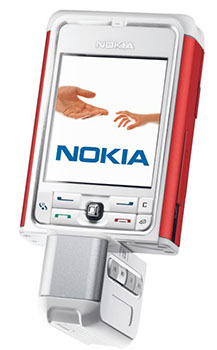
In this model, the keyboard part was equipped with a rotary mechanism. On the one hand was an alphanumeric keyboard, and on the back were the multimedia function keys. The smartphone’s camera was placed on the side of the turntable; when turned half a turn, the smartphone’s screen turned into a viewfinder.
Not all design ideas at the moment can be implemented. We suggest recalling the wildest fantasies about Nokia phones.
Nokia Morph

The device was presented on February 25, 2008 at the Museum of Modern Art in New York. It was developed as a joint project of the cell phone research center of Nokia and the University of Cambridge. At the time of concept development, it was assumed that components for its production could become available within seven years. Whether such a phone will see the light or not, time will tell.
Nokia Kinetic
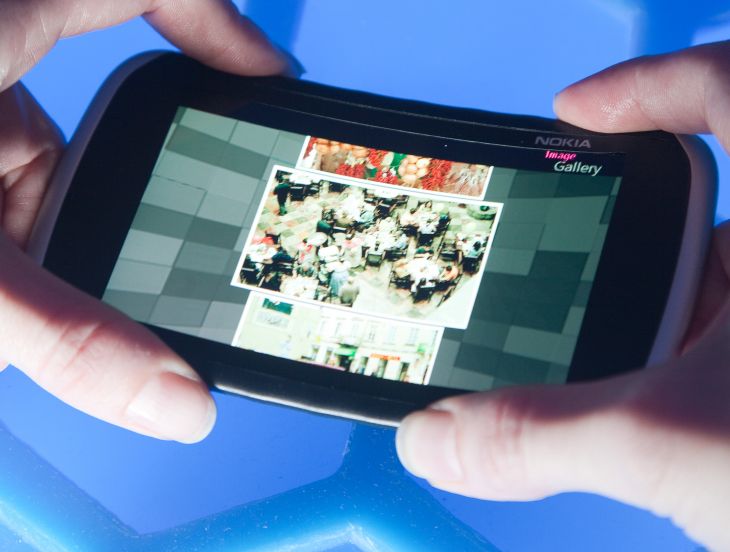
The flexible phone concept, which is controlled by bending and twisting, was introduced at Nokia World in 2011. You can zoom in by “breaking” the phone diagonally, and accepting an incoming call simply by squeezing the flexible body. The speed of scrolling the screen in it depends on the applied effort, and the lack of buttons on the phone makes it waterproof. The head of the design and technological research department, Tapani Jokinen, believed that at the time the concept appeared, all the technologies for serial production of Nokia Kinetic were already available and, theoretically, such a device could appear on the market in three years. In the future, we can find out if his predictions came true.
And the next two models were developed a bit later, to the 25th anniversary of Nokia Research Center.
Nokia Human Form

This "humanized" concept phone with a flexible fully touch-sensitive housing and a translucent screen was designed for gesture control and was the continuation of the Nokia Kinetic idea. As conceived by the creators, the model should be able to recognize the emotions of the owner and open the possibility of non-verbal communication using a unique screen.
Nokia GEM
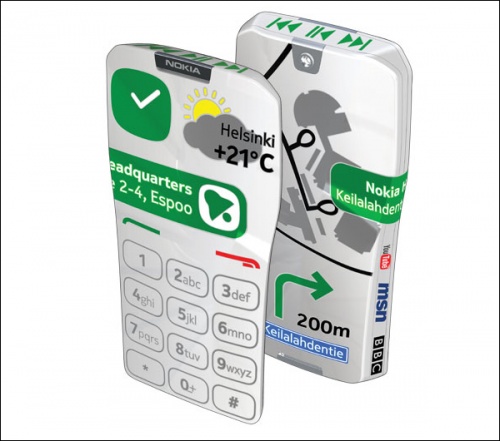
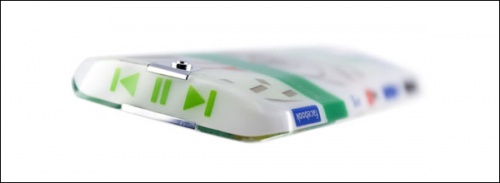
This is a fully touchscreen phone, the entire surface of which is a screen. It offers amazing personalization options, right down to button layout. How do you like this idea?
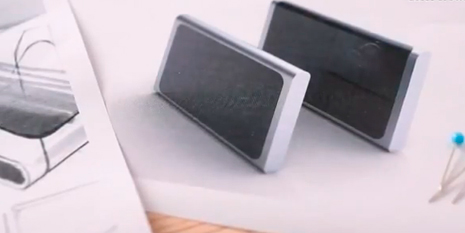
The design history of modern Nokia models begins with the Nokia N9. It was he who became the first smartphone in a solid body made of colored polycarbonate. This material has opened our designers new horizons for working with color. The components of which it consists make it possible to achieve excellent color intensities, some colors may have a glossy finish and others may have a matte texture. The lack of buttons on the front panel along with a molded case leave a pleasant impression of integrity from Nokia N9 and subsequent models.

The second notable innovation in design was the curved screen. Bevels of glass at the edges become especially noticeable under the light source. For example, the light from the lamp does not reflect directly into the eyes, but rather “moves out” somewhere in the corner of the screen, without interfering with the work with the smartphone. And the finger slides on such a screen more conveniently.
Appearance of Nokia N9 was appreciated by experts: the model received a yellow pencil in the category Interactive Design for Products from the design organization D&AD (Design and Art Direction).
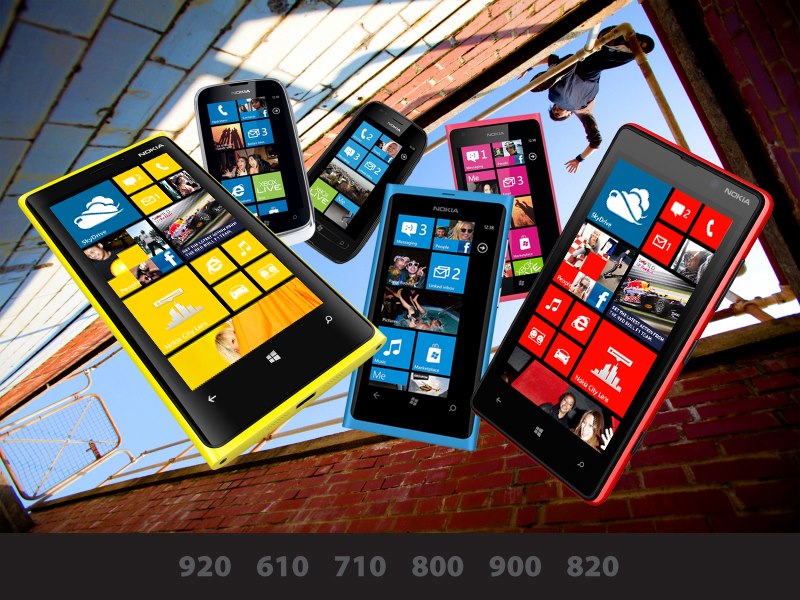
The design tradition of Nokia N9 was continued in the current family of our smartphones. The general approach can be characterized in three words: conciseness, color and mastery.
Laconicism means the presence of the smallest possible number of distinguished elements.
Scientific advances in pigmentation have enabled us to use the polymer as a color medium. Lumia cases are stained in bulk, even before the molding stage. This allows our smartphones not only to be very bright, but also not to lose their charm over time. And the small scratches that inevitably appear on the body of any phone on Lumia will be barely noticeable.
By mastery, we understand the efforts of designers to develop the device, which they make to best fit a variety of technological elements in a rather thin and lightweight case. This is a very difficult and painstaking work, which requires coordinated joint work of designers and engineers of the company.
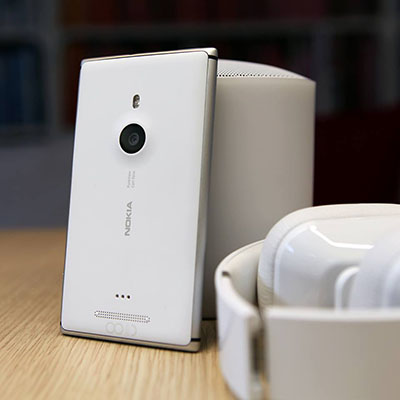
Sometimes the new is the well-forgotten old. And in the case of our latest novelty, Nokia Lumia 925 , we are back to the already proven idea of a metal case. For the first time in the Lumia family, the model frame was made of aluminum. It is worth noting that the result was excellent!

It is thanks to Frank's fresh look that the approach to the development of mobile phones has changed: under his leadership, design and ergonomics have become paramount with functionality.

Under the cut, you are invited to tour the most interesting design models of Nokia.

One of the first Nokia fashion phones to be recognized by the general public was the Nokia 8110. It was actively used by the characters of the film “The Matrix” by the Wachowski brothers. At the same time, the modification that appeared in the cult picture differed from the serial sample by the presence of a button for opening the flip, which was located on the rear panel.

After the release of the film, a limited batch of phones in this modification was released. And the version in which the lid was manually moved came into mass sale. The phone is still popular among movie fans. Agree, this is very good for an apparatus created in 1997.

Nokia 5510, which appeared in 2001, became the first model with a full-size keyboard in the candy bar form factor in our portfolio. It resembled the legendary Nokia 3310 released a year earlier, but at the same time it had an expanded set of functions, a built-in mp3 player and FM radio. The blocks of keys located on the sides of the screen made the 5510 ideal for quick typing of short text messages, which were gaining in popularity at that moment. It was a one-of-a-kind model: more devices with this design were no longer produced. The closest in spirit to the 5510 model was the Nokia 6800, in which the keyboard was already folding.

Nokia 9000/9110 / 9210i / 9300/9500

The whole line of business-class smartphones, which began with the Nokia 9000 in 1996, had a common family feature: when folded, the models looked like a regular phone with a standard keyboard and a small screen. And in open form, they were something like mini-laptops, with a large screen and a full keyboard. Only the first model, Nokia 9000, had an external antenna; subsequent models were already equipped with a built-in one.
Nokia 8810/8910 / 8910i


Under the leadership of Frank Nuovo, our designers staged a real revolution, proposing to use not only plastic, but also metal when creating phones. But in 1998, production lines did not yet have the ability to work with this material, so the Nokia 8810 received only a plastic flip coated with a metal. But Nokia 8910, released in 2002, was made of titanium.
In fact, the history of a separate line of premium models, which is characterized by the use of unusual and expensive materials - Vertu, began with these models.
Nokia 7650/3650/3660

In 2002, the Nokia 7650 slider was a great success in the business environment, and in 2003 the Nokia 3650, which focused more on a youth audience, became its ideological follower. The keyboard, resembling a disk phone, caused an unusual, rounded down form of the case. From a design point of view, the next model, Nokia 3660, was distinguished by a more traditional layout of keys, however, it retained the drop-shaped case characteristic of its predecessor.
2003 was generally rich in phones and smartphones of an unusual shape. This is the Nokia 7600, aimed at a female audience, and smartphones for geeks - Nokia 7700 and Nokia N-Gage . The latter is worth telling in more detail.

N-Gage was positioned not as a smartphone, but rather as a game console with the ability to make calls, send SMS and MMS. This is due to the unusual shape of its body: the keys are located on the sides of the bright color screen. Reminds Nokia 5510, which we talked about earlier, but in the N-Gage the alphanumeric keypad was located on the right, and on the left was placed a joystick and multimedia keys. An interesting solution was the location of the microphone and the speaker in the upper end of the smartphone, for this feature the people received the nickname Cheburashka. The QD model, which continued the N-Gage line, was a little smaller and had a standard speaker with a microphone, so that you could talk on it in a quite familiar way.

Fashion models
Around 2003-2004, a mobile phone ceased to be just a "workhorse", they began to treat it as a fashion accessory, which could not but affect the appearance of our models.

Especially for fashionists, in 2004 we released a series of fashion phones: Nokia 7260 - a candy bar, but with a designer keyboard, Nokia 7270 - a “clamshell” combining a plastic case with suede covers, and Nokia 7280. The latter, in fact, became an experimental model for women: in form, he looked more like a tube of lipstick than a telephone. Management was carried out using the touch wheel, and the screen in the off state could be used as a mirror.
In the future, the line of fashionable phones was continued. In 2006, the models Nokia 7360, 7370 and 7390 saw the light. The first phone was made in the form of a monoblock, the second - in an unusual case with a rotary opening mechanism, and the latter - the usual “clamshell”. The new line of designer phones received a less defiant coloring and standard control methods, although the principle of an unusual combination of materials remained the same: fabric and leather here were adjacent to plastic in pastel colors.

Youth models
We have already mentioned several phones targeted at youth audiences. Let's recall other devices in this category.

The Nokia 3200 , introduced in 2003, was available in a transparent case with unusual customization capabilities: it was proposed to cut the colored “earbuds” with a special device that came with the phone. At the same time, several ready-made liners were already included in the kit. Among other distinctive features, it is worth mentioning the double oval keys and their dynamic backlight: when they call, they blinked to the beat of the selected polyphonic melody.

The continuation of this model in 2004 was the Nokia 3220. There was no longer such room for the design of the case, but dynamic backlighting was preserved when making a call, and the youthful and sporty character of the phone was expressed by rubber inserts on the sides, behind which were hidden color indicators. The keys were still double, but got a more convenient and familiar shape. For the same model, by the way, there was a special back panel with a number of LEDs: thanks to it, waving the phone in the dark, it was possible to draw small images or texts of several letters.

In the future, a series of youth phones was continued in the XpressMusic family, and the most unusual in design of them can be called the Nokia 3250 XpressMusic .

In this model, the keyboard part was equipped with a rotary mechanism. On the one hand was an alphanumeric keyboard, and on the back were the multimedia function keys. The smartphone’s camera was placed on the side of the turntable; when turned half a turn, the smartphone’s screen turned into a viewfinder.
Concepts
Not all design ideas at the moment can be implemented. We suggest recalling the wildest fantasies about Nokia phones.
Nokia Morph

The device was presented on February 25, 2008 at the Museum of Modern Art in New York. It was developed as a joint project of the cell phone research center of Nokia and the University of Cambridge. At the time of concept development, it was assumed that components for its production could become available within seven years. Whether such a phone will see the light or not, time will tell.
Nokia Kinetic

The flexible phone concept, which is controlled by bending and twisting, was introduced at Nokia World in 2011. You can zoom in by “breaking” the phone diagonally, and accepting an incoming call simply by squeezing the flexible body. The speed of scrolling the screen in it depends on the applied effort, and the lack of buttons on the phone makes it waterproof. The head of the design and technological research department, Tapani Jokinen, believed that at the time the concept appeared, all the technologies for serial production of Nokia Kinetic were already available and, theoretically, such a device could appear on the market in three years. In the future, we can find out if his predictions came true.
And the next two models were developed a bit later, to the 25th anniversary of Nokia Research Center.
Nokia Human Form

This "humanized" concept phone with a flexible fully touch-sensitive housing and a translucent screen was designed for gesture control and was the continuation of the Nokia Kinetic idea. As conceived by the creators, the model should be able to recognize the emotions of the owner and open the possibility of non-verbal communication using a unique screen.
Nokia GEM


This is a fully touchscreen phone, the entire surface of which is a screen. It offers amazing personalization options, right down to button layout. How do you like this idea?
Our days

The design history of modern Nokia models begins with the Nokia N9. It was he who became the first smartphone in a solid body made of colored polycarbonate. This material has opened our designers new horizons for working with color. The components of which it consists make it possible to achieve excellent color intensities, some colors may have a glossy finish and others may have a matte texture. The lack of buttons on the front panel along with a molded case leave a pleasant impression of integrity from Nokia N9 and subsequent models.

The second notable innovation in design was the curved screen. Bevels of glass at the edges become especially noticeable under the light source. For example, the light from the lamp does not reflect directly into the eyes, but rather “moves out” somewhere in the corner of the screen, without interfering with the work with the smartphone. And the finger slides on such a screen more conveniently.
Appearance of Nokia N9 was appreciated by experts: the model received a yellow pencil in the category Interactive Design for Products from the design organization D&AD (Design and Art Direction).
Nokia Lumia

The design tradition of Nokia N9 was continued in the current family of our smartphones. The general approach can be characterized in three words: conciseness, color and mastery.
Laconicism means the presence of the smallest possible number of distinguished elements.
Scientific advances in pigmentation have enabled us to use the polymer as a color medium. Lumia cases are stained in bulk, even before the molding stage. This allows our smartphones not only to be very bright, but also not to lose their charm over time. And the small scratches that inevitably appear on the body of any phone on Lumia will be barely noticeable.
By mastery, we understand the efforts of designers to develop the device, which they make to best fit a variety of technological elements in a rather thin and lightweight case. This is a very difficult and painstaking work, which requires coordinated joint work of designers and engineers of the company.
New era

Sometimes the new is the well-forgotten old. And in the case of our latest novelty, Nokia Lumia 925 , we are back to the already proven idea of a metal case. For the first time in the Lumia family, the model frame was made of aluminum. It is worth noting that the result was excellent!

